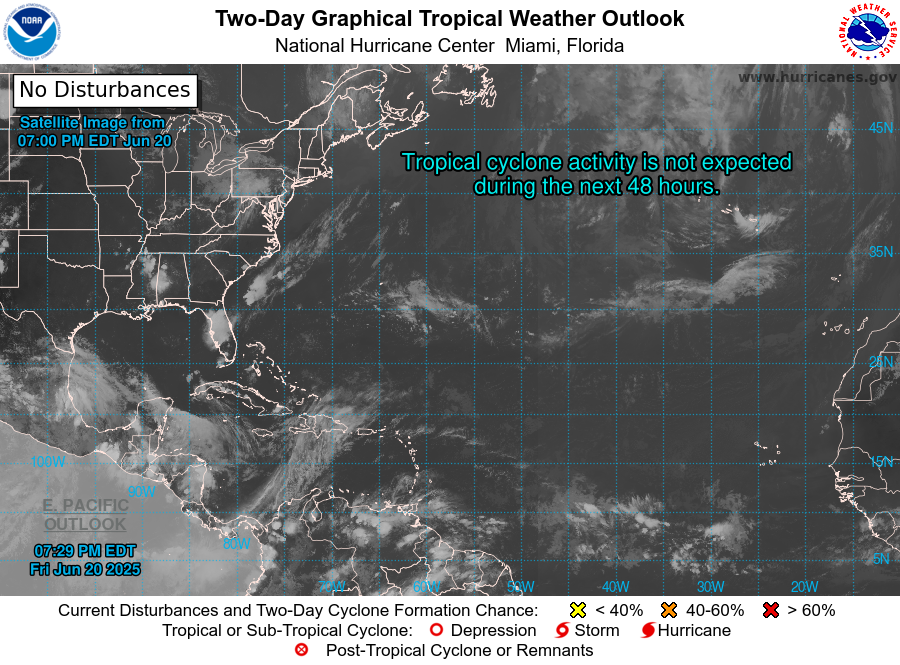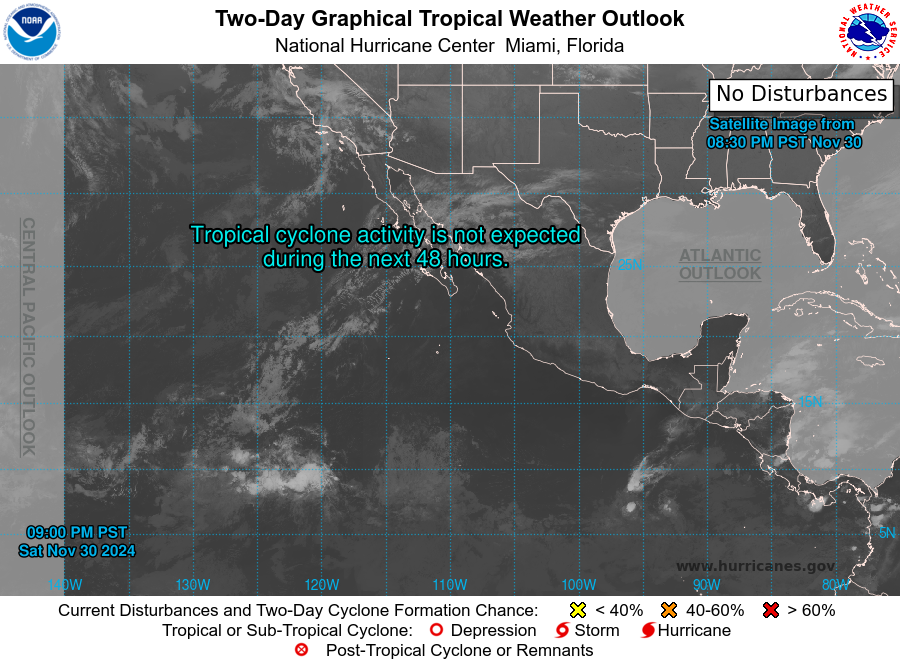Updated at 4:09 p.m. EDT June 14, 2023
Here is what we are paying attention to in the next 48 to 72 hours. The article also includes weather maps for longer-term outlooks and a five-day World weather forecast.
We start with the U.S. Information.
Short Range Forecast Discussion NWS Weather Prediction Center College Park MD 400 PM EDT Wed Jun 14 2023 Valid 00Z Thu Jun 15 2023 - 00Z Sat Jun 17 2023…Active stretch of heavy rain with the risk for flash flooding and
severe weather continues for the Southeast, Plains, and Rockies……Record-breaking and oppressive heat for portions of Texas and South
Florida……Unsettled and cool weather forecast across the Northeast; tranquil,
near-average conditions for the West Coast…

| Information Note: This article is now set up so that all the maps should automatically update. The links are provided but should not be needed. The downside is that if you go back to a previous version the maps will have been updated and not be relevant to the date of the prior article but will be current information. The NWS twice-a-day 48-hour forecasts do not auto-update in this article. I do it and I can be late doing it. The link for the NWS updates is HERE. Most of our other articles will not be set up to auto-update so that prior versions of the article will be meaningful.
Recently, we published the World Agriculture Report. You can access this report HERE. We also published the June 1 Update of the Colorado and Eastern Great Basin. You can access that article HERE. Remember the easiest way to get back to the article you were reading is to hit the return arrow in the upper left of your screen. There are other ways. |
First, the 48-Hour Forecast (It is a 48 to 72 Hour Forecast actually)
Daily weather maps. The Day 1 map updates twice a day and the Day 2 and 3 maps update only once a day. These maps update automatically. But if that does not happen, you can get updates by clicking HERE
TODAY (or late in the day the evening/overnight map will appear)
TOMORROW
NEXT DAY
This animation shows how things may play out over the next 60 hours. To update click here.
The NWS Climate Prediction Center’s: Watches, Warnings, and Advisories plus other information can be found HERE.
ATMOSPHERIC RIVERS
This tells us what is approaching the West Coast. Click HERE to update If I have not gotten around to doing the update. Here is some useful information about Atmospheric Rivers.
Continuation of the NWS Short Range Forecast. It is updated by NWS twice a day and these updates can be found here. We post at least one of those updates daily, sometimes both. The Highlights are shown in the lede paragraph of this article.
An active stretch of heavy rain with the potential for multiple areas of
flash flooding as well as Spring-like severe weather will continue over
the next couple of days, stretching from the Southeast and Plains into the
Rockies. Energetic westerly southern-stream flow over a quasi-stationary
front lingering across a very moist airmass settled in the Southern Plains
and Southeast will provide the trigger and fuel for organized,
strong-to-severe thunderstorms. One area of focus for heavy rainfall on
Thursday will be for portions of southern Alabama and Georgia where a
Slight Risk (level 2/4) of Excessive Rainfall is in effect. The
combination of clustering, organized storms focusing along the boundary
and deep moisture contributing to heavy downpours may lead to some
scattered instances of flash flooding. In addition, the Storm Prediction
Center has highlighted the region for a Slight Risk (level 2/5) of severe
thunderstorms with hail, gusty winds, and a few tornadoes all possible.
Another focus for severe thunderstorms will be over the Central/Southern
Plains. A broad Slight Risk is in effect as very strong CAPE values and
the westerly flow aloft contributing to more than sufficient shear for
June standards is expected to lead to the risk of very large hail, strong
winds, and several tornadoes, with the potential for some significant
instances of each threat. Additional severe thunderstorms are possible
downstream of the Plains into the Lower Mississippi Valley Friday. Farther
west, broad, weak upper-level flow over the Intermountain West along with
a cold front passing through the region will lead to slow-moving
thunderstorms from the Great Basin into the central Rockies and adjacent
High Plains the next couple of days. High available moisture content in
the region as well as moisture pooling along the boundary will lead to yet
another focus area for heavy-rain producing thunderstorms and the risk of
isolated to scattered instances of flash flooding. Slight Risks of
Excessive Rainfall are in effect for portions of the Central Rockies
Thursday and into the central High Plains on Friday.To the south of the active weather, Summer-like heat is forecast to soar
throughout the Lone Star State into the end of the week and beyond, with
only the Texas Panhandle omitted from triple digit high temperatures. When
combined with oppressive humidity, particularly across South Texas and the
western Gulf Coast, heat indices could reach as high as 120 degrees. These
temperatures can be very dangerous if spending extended time outdoors or
in areas without proper air conditioning. Over the next few days, the
anomalous heat is expected to expand gradually into more of western and
north-central Texas, while also threatening some daily high temperature
records. Residents are advised to follow proper heat safety and heed
warnings from local officials. Additionally, the warm temperatures when
combined with gusty winds and low relative humidity have prompted a
Critical Risk of Fire Weather from the Storm Prediction Center across
portions of southeast Arizona, southern New Mexico, and West Texas
Thursday and Friday, with the threat also forecast to continue into the
weekend. Potentially record-tying/breaking high temperatures in the
mid-90s are also forecast for South Florida Thursday and Friday.Elsewhere, an upper-level low over the Great Lakes pushing eastward
followed by a reinforcing upper-level trough over the Northeast on Friday
will allow for continued below average temperatures and shower chances for
the next few days. Much of the rainfall is expected to be light to locally
moderate at times and will be seen as mostly beneficial given the
anomalously dry May and first half of June. Weak southern-stream troughing
over portions of California and the Desert Southwest will keep
temperatures a bit below average, with mostly 90s in the deserts and 60s
to low 70s along the coast. Conditions will be around average and tranquil
over the Pacific Northwest, with highs in the 60s and 70s for coastal
locations west of the Cascades, and 80s east into the interior.
Learn about wave patterns HERE.
Below is the current five-day cumulative forecast of precipitation (Updates can be found HERE)
Now we look at Intermediate-Term “Outlook” maps for three time periods. Days 6 – 10, Days 8 – 14, and Weeks 3 and 4. An outlook differs from a forecast based on how NOAA uses these terms in that an “outlook” presents information as deviation from normal and the likelihood of these deviations.
Below are the links to obtain updates and additional information. They are particularly useful if you happen to be reading this article significantly later than when it was published. I always try to provide readers with the source of the information in my articles.
| Days 6 – 10 (shown in Row 1) | Days 8 – 14 (Shown in Row 2) | Weeks 3 and 4 (Shown in Row 3 but updates only on Fridays) |
| https://www.cpc.ncep.noaa. gov/products/predictions/610day/ | https://www.cpc.ncep .noaa.gov/products/predictions/814day/ | https://www.cpc.ncep.noaa.gov/products/predictions/WK34/ |
Showing the actual maps. They should now update automatically. The Week 3 – 4 Outlook only updates on Fridays. So below is what I call the Intermediate-term outlook. On Fridays, it extends out 28 Days. That declines day by day so on Thursday it only looks out 22 days until the next day when the Week 3 – 4 Outlook is updated and this extends the outlook by one additional week.
| 6
– 10
|
|
|
| 8
– 14 |
|
|
| 3
– 4 |
|
|
HAZARDS OUTLOOKS
Click here for the latest complete Day 3 -7 Hazards forecast which updates only on weekdays. Once a week probably Monday or Tuesday I will update the images. I provided the link for readers to get daily updates on weekdays. Use your own judgment to decide if you need to update these images. I update almost all the images Friday Night for the weekend edition of this Weather Report. So normally readers do not need to update these images but if the weather is changing quickly you may want to.
Temperature month to date can be found at https://hprcc.unl.edu/products/maps/acis/MonthTDeptUS.png
Precipitation month to date can be found at https://hprcc.unl.edu/products/maps/acis /MonthPNormUS.png
World Forecast
Below are the Day 1 -3 and 4-6 forecasts for temperature and precipitation. Updates and much additional information can be obtained HERE
World Temperature Anomalies
World Accumulated Precipitation
This information is provided by the University of Maine. They draw upon many different sources. There is a lot of information available at the link provided. I have just provided two useful forecasts. There are probably over a hundred different forecasts available from this source.
Worldwide Tropical Forecast (This is a NOAA Product)
This graphic updates on Tuesdays) If it has not been updated, you can get the update by clicking here Readers will only have to do that if they are reading this article much later than the date of it being published.
–
Information on Tropical Storms can be found HERE. Western Pacific information can be found HERE.


–
| I hope you found this article interesting and useful. |
–
